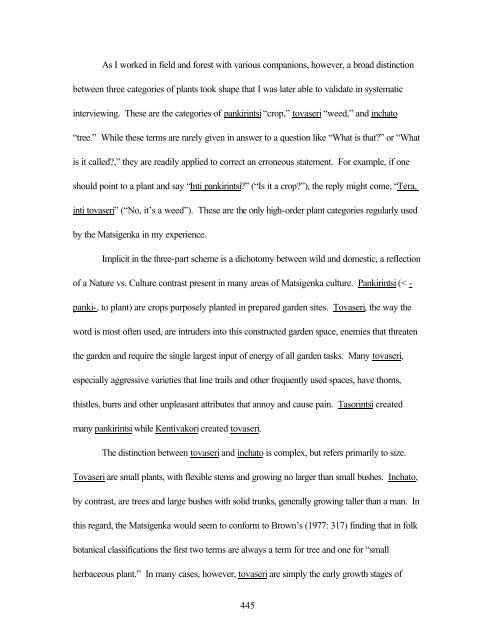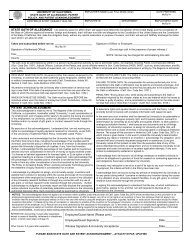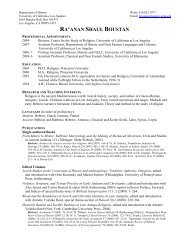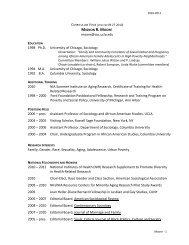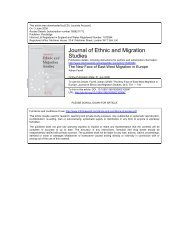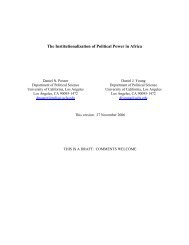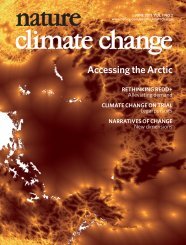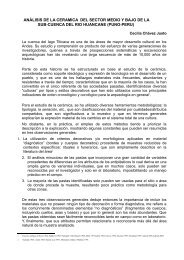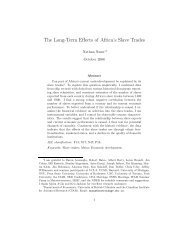433 Chapter Seven Cosmos For the Matsigenka of Shimaa, kameti ...
433 Chapter Seven Cosmos For the Matsigenka of Shimaa, kameti ...
433 Chapter Seven Cosmos For the Matsigenka of Shimaa, kameti ...
Create successful ePaper yourself
Turn your PDF publications into a flip-book with our unique Google optimized e-Paper software.
As I worked in field and forest with various companions, however, a broad distinction<br />
between three categories <strong>of</strong> plants took shape that I was later able to validate in systematic<br />
interviewing. These are <strong>the</strong> categories <strong>of</strong> pankirintsi “crop,” tovaseri “weed,” and inchato<br />
“tree.” While <strong>the</strong>se terms are rarely given in answer to a question like “What is that?” or “What<br />
is it called?,” <strong>the</strong>y are readily applied to correct an erroneous statement. <strong>For</strong> example, if one<br />
should point to a plant and say “Inti pankirintsi?” (“Is it a crop?”), <strong>the</strong> reply might come, “Tera,<br />
inti tovaseri” (“No, it’s a weed”). These are <strong>the</strong> only high-order plant categories regularly used<br />
by <strong>the</strong> <strong>Matsigenka</strong> in my experience.<br />
Implicit in <strong>the</strong> three-part scheme is a dichotomy between wild and domestic, a reflection<br />
<strong>of</strong> a Nature vs. Culture contrast present in many areas <strong>of</strong> <strong>Matsigenka</strong> culture. Pankirintsi (< -<br />
panki-, to plant) are crops purposely planted in prepared garden sites. Tovaseri, <strong>the</strong> way <strong>the</strong><br />
word is most <strong>of</strong>ten used, are intruders into this constructed garden space, enemies that threaten<br />
<strong>the</strong> garden and require <strong>the</strong> single largest input <strong>of</strong> energy <strong>of</strong> all garden tasks. Many tovaseri,<br />
especially aggressive varieties that line trails and o<strong>the</strong>r frequently used spaces, have thorns,<br />
thistles, burrs and o<strong>the</strong>r unpleasant attributes that annoy and cause pain. Tasorintsi created<br />
many pankirintsi while Kentivakori created tovaseri.<br />
The distinction between tovaseri and inchato is complex, but refers primarily to size.<br />
Tovaseri are small plants, with flexible stems and growing no larger than small bushes. Inchato,<br />
by contrast, are trees and large bushes with solid trunks, generally growing taller than a man. In<br />
this regard, <strong>the</strong> <strong>Matsigenka</strong> would seem to conform to Brown’s (1977: 317) finding that in folk<br />
botanical classifications <strong>the</strong> first two terms are always a term for tree and one for “small<br />
herbaceous plant.” In many cases, however, tovaseri are simply <strong>the</strong> early growth stages <strong>of</strong><br />
445


